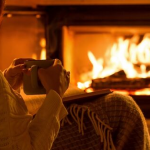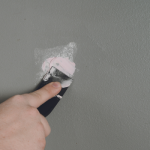How To Keep Your Fireplace Safe
Your fireplace provides your home with warmth and a relaxing ambiance. Although fireplaces are meant to soothe you, they can also stress you out because of the dangers associated with them. Dirty chimneys can cause chimney fires, which destroy homes and injure or kill people. Chimney fires burn explosively, but many homeowners don’t realize their chimney is on fire until it’s too late.
To protect your family and your property from unexpected fires, you must routinely clean your fireplace. Keep on reading to learn about fireplace maintenance and safety.
Understanding Fireplaces and Chimneys
Fireplaces are designed to contain wood-fuel fires safely while providing your home with heat. Chimneys expel the by-products of combustion, which are the substances produced when wood burns. Some of these substances include:
- Smoke
- Gases
- Water vapor
- Hydrocarbon
- Unburned wood particles
- Tar fog
- Assorted minerals
Condensation occurs when these substances exit the fireplace and make their way into the chimney. The inside walls of your chimney are probably coated with creosote, a black or brown tar-like residue that’s crusty and flaky. A combination of creosote and a high internal flue temperature can result in a chimney fire, so it’s crucial to minimize creosote build-up as much as possible. Restricted air supply, unseasoned wood, and cold chimney temperatures result in creosote build-up.
Inspect the Firebox
Look for any cracks, gaps, or signs of wear in the lining of the firebox–the interior of the fireplace. If your firebox’s lining has deteriorated to the point where you can see its steel body, you’ll need to have your firebox professionally repaired. Untreated firebox damage can lead to excessive heat build-up, which will cause permanent damage to your firebox.
Check for Smoke Stains
Smoke stains are a telltale sign your fireplace isn’t functioning at its best. If you notice stains on your ceiling, it’s likely smoke is escaping from a gap between the hearth and the firebox. Sparks that fall into this gap will send up smoke, essentially acting as a second chimney.
Make Sure Your Grate Fits
Fireplace grates increase air movement around a fire and are typically made of steel or cast iron, allowing fires to burn evenly and efficiently. However, bigger grates don’t equate to bigger and better fires. According to the Chimney Safety Institute of America, a metal grate should be no more than two-thirds the size of your fireplace opening. Oversized grates require more wood, and the resulting flames can overheat your fireplace. If your grate is too large, replace it with a properly fitted one that’s proportionate to your fireplace’s opening.
Climb the Chimney
One of the biggest mistakes a homeowner can make is assuming their chimney is in perfect condition. If you plan on using your fireplace each day over the winter, you’ll need to inspect your chimney first. The National Fire Protection Association recommends homeowners to conduct a chimney inspection once or twice a year.
Even if you provide your fireplace with routine maintenance, there’s still a possibility of a fire breaking out. In the unfortunate event, your house experiences structural damage as a result of a fire; you’ll need to work with a public adjuster.
Contact Hudson Douglas Public Adjusters today, and our experts will help you assess the type of claim you need to file and make sure you receive a fair settlement.




